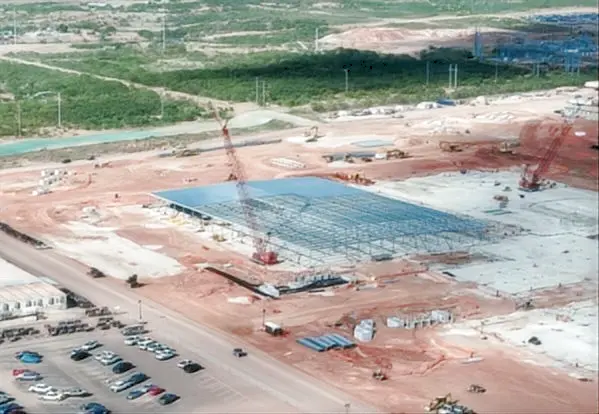“If U.S. tech companies hadn’t significantly increased their artificial intelligence capital expenditures this year, the U.S. economy might have already fallen into a recession, or at least been on the brink of one,” said George Saravelos, global head of foreign exchange research at Deutsche Bank in a report on the 23rd. He believes that AI spending has now become a pillar supporting the overall U.S. economy, but he also expresses skepticism about the sustainability of this reliance.
Recently, major U.S. AI companies have frequently announced investment and construction plans, repeatedly shocking the market. On the 24th, OpenAI, Oracle, and SoftBank Group jointly announced plans to build five new AI data centers in the U.S. to advance their ambitious “Stargate” project.
“Something unprecedented”
The Organization for Economic Co-operation and Development (OECD) raised its forecast for U.S. economic growth in 2025 from 1.6% in June to 1.8% on Tuesday, largely thanks to strong AI-related investment. Deutsche Bank also pointed out in its report that the AI supercycle could help mitigate the negative demand (such as tariffs) and supply (such as immigration restrictions) shocks currently pressuring the U.S. economy.
Christopher Mims, a reporter for The Wall Street Journal, posted on social media last month: “Over the past six months, AI infrastructure construction has contributed more to U.S. economic growth than consumption. Just in the last three months, the ‘Magnificent Seven’ companies like Nvidia, Apple, and Microsoft have invested over $100 billion in areas such as data centers.”
U.S. Fortune magazine’s website reported that in the U.S. economy, which is dominated by services and where consumption accounts for about two-thirds of GDP, consumption now faces a new competitor: data centers densely equipped with servers, storage, and networking equipment. According to estimates by Renaissance Macro Research, so far in 2025, the contribution of AI data center spending to GDP growth has already exceeded the sum of all consumer spending—”something unprecedented.”
“Circular trading” fueling a bubble?
Fortune magazine stated that without the current wave of AI data center construction, against a backdrop of uncertain macroeconomic prospects, U.S. GDP might have already contracted. Microsoft, Google, Amazon, and Meta are the main drivers of this round of AI investment, with the four companies expected to reach a record $364 billion in capital expenditures in 2025.
However, Bloomberg pointed out that more and more industry insiders are beginning to doubt whether there is a bubble in the AI field, which could repeat the path of the 25-year-old internet bubble burst. OpenAI CEO Sam Altman had previously expressed concern about the overvaluation of some AI startups and excessive investor enthusiasm. Federal Reserve Chairman Jerome Powell also mentioned on September 17th that the U.S. is experiencing “exceptionally large economic activity driven by AI construction.”
Can AI investment hedge against the risks of stagflation?
In its report, the OECD projected that the U.S. inflation rate will still be above the Federal Reserve’s target level in 2026. Affected by rising effective tariff rates and increasing policy uncertainty, the organization has further lowered its U.S. economic growth forecast for 2026 to 1.5%.
Barron’s reported that Powell said in a speech on the 23rd that the U.S. economy is facing “stagflationary” challenges: economic growth and the job market are significantly weak, while inflation remains high. This “dilemma” has put monetary policymakers in a difficult position.
